News
News Archive
- ‘Amid the Hills of Redesdale’ community radio play released!
- A Fantastic Year for Redesdale!
- Archaeological Excavation report produced for Bellshiel
- Archaeological Excavation report produced for Yatesfield enclosed settlement
- Archaeological Survey Report Published For Ancient Settlement At Rattenraw
My Revitalising Redesdale: A Walk Through Time with Redesdale Ramblers
May 15, 2020
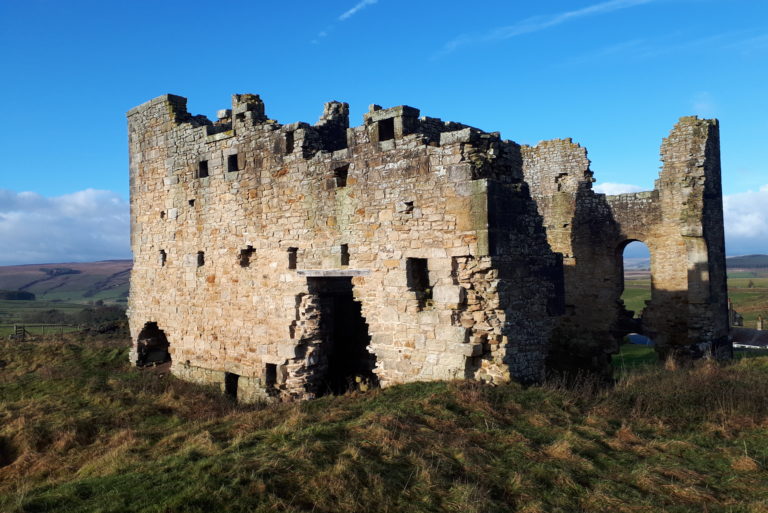
A huge thank you to Sue Thouret for this week’s My Revitalising Redesdale blog. This week we are taking you on a (virtual) guided walk around West Woodburn, East Woodburn and Ridsdale, taking in the astounding array of history on offer in this part of the Rede, Broomhope, and Lisles valleys. Sue describes ten historical sites you will see along the walk, encompassing over 2000 years of human heritage.
For downloadable route information and historical notes on this walk see the Corsenside Walks page and leaflets, which were produced by the Redesdale Ramblers with funding from our Community Heritage Fund.
“The Corsenside History Walk is a perennial favourite with Redesdale Ramblers. It is a walk that we can do in all seasons although it can be very muddy in certain areas after rain. It is a walk that we change the route on every time we do it so we never really walk the same way twice! We have now added various detours and additions from the original published walk to take in certain historic view points. Anyone doing this walk should take care to follow the country code because the rights of way go through farm land with livestock at certain times of year. It is therefore not really suitable for dog walkers.” – Sue Thouret, Redesdale Ramblers
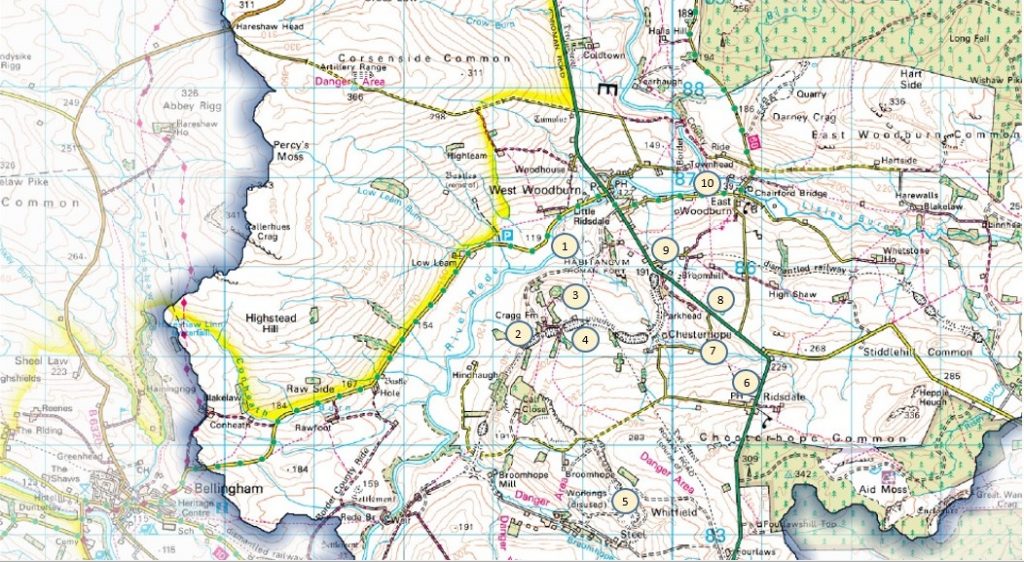
1. Habitancum
Habitancum was an ancient Roman fort located at Risingham near West Woodburn in Northumberland. The fort was one of a series built along Dere Street, a Roman road running from York via Corbridge to Melrose. The A68 in general follows the original path of this route. There was an active fort on this site spanning a period of approximately 200yrs.
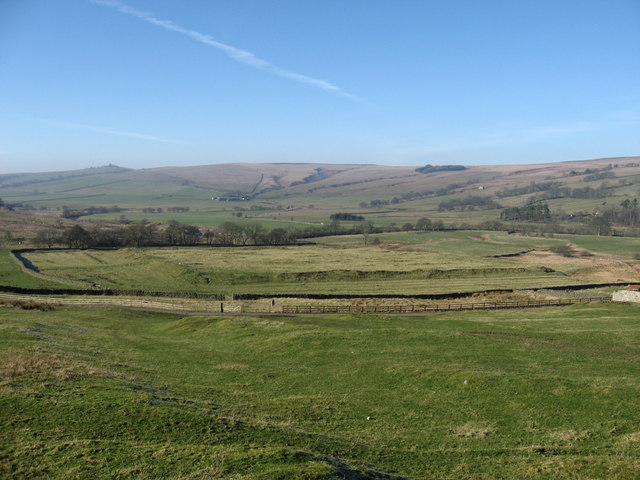
The first fort of the Antonine period from about AD 139 was built for the second invasion of Scotland resulting in the building of the Antoinine Wall across Scotland between the Forth and Clyde rivers. The fort was destroyed in 197AD. It would have been a wooden stockade with earth works. A new Fort was built during the reign of the Emperor Severus on the same site in about 205/208 AD. The rebuilding would have been part of a major refurbishment of the Roman Wall and a far more substantial stone structure was built than previous. A little later the fort under went further reconstruction for unknown reasons. By 325 AD the fort was eventually abandoned.
The fort’s name is from Habitanci, an altar set up by Marcus Gavius Secundinus a consular beneficiary who served at the fort. Habitancum is well preserved and retains significant archaeological deposits. It is important as an example of a garrison fort which was in the frontier zone throughout much of the Roman occupation of Britain and for its role in various Scottish campaigns.
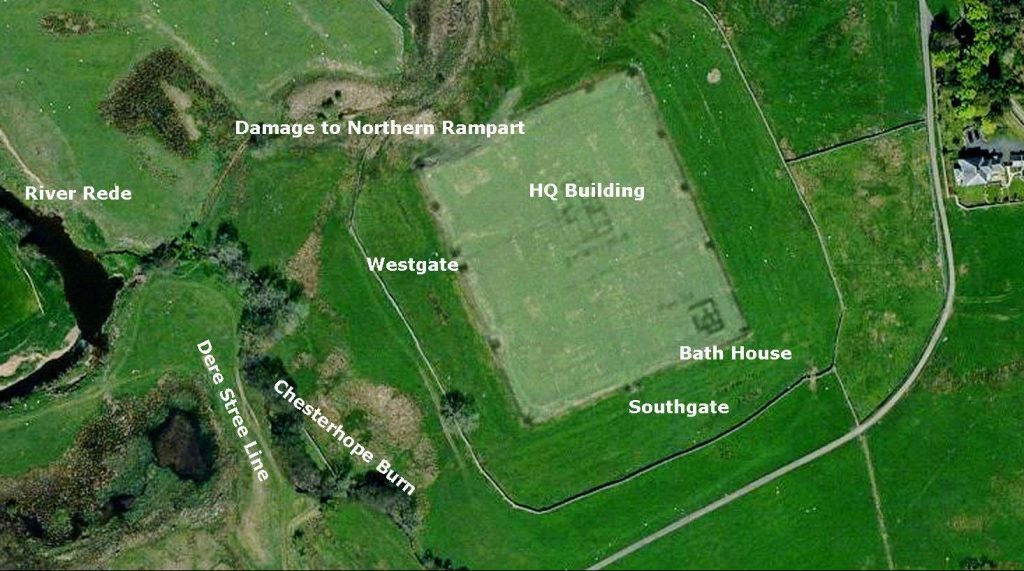
The fort seen today is in the classic rectangle shape with rounded corners, measuring 135m (450ft) by 117m (400ft) It had a substantial rampart and wall. The visible remains at Habitancum are of the fort constructed in the early years of the third century AD. An inscribed slab, uncovered during excavation, records the construction of the fort by a 1000-strong mounted cohort (one of the ten units of a Roman legion).
The remains of the walls of the fort are a substantial feature of what can still be seen. They are up to 10m wide with a height of 0.5 to 1.2m above the interior of the fort. The original walls were constructed of large blocks of local sandstone infilled with rubble and earth. Most of the large facing stones have been removed leaving only the rubble infill. The fort has three gateways. The west and south gates are seen as breaks in the wall about 8m wide with raised causeways over ditches, which would have surrounded the Fort. A gap in the centre of the northern wall is thought to be the site of a northern gateway. It is a Scheduled Monument protected by law (Historic England) but is situated on private land so permission must be sought from the landowner before entry. Dere Street passes to the west of the fort and would have crossed the River Rede near to Little Ridsdale.
2. Cragg Quarry
Cragg Quarry is situated about a mile south west of West Woodburn. It was a sandstone quarry which ceased production in the 1920s, but re-opened in the early 1990s and closed again around 2001. In 2005 a 10-year licence was granted for further extraction of Sandstone. According to Northumberland County Council, extraction from the site is intermittent depending on demand, and the site is capable of producing 3,000 tonnes per year. More recently it has been filled in and planted with trees.
3. Bell Knowe – Bronze age burial site
Bell Knowe stands on the same hill overlooking the valley of the River Rede, very close to Cragg Quarry. It is 16m in diameter and stands 1.4m high. In the centre is a hollow where 19th century excavation took place. Round cairns are prehistoric funerary monuments dating to the Bronze Age (c.2000-700 BC).
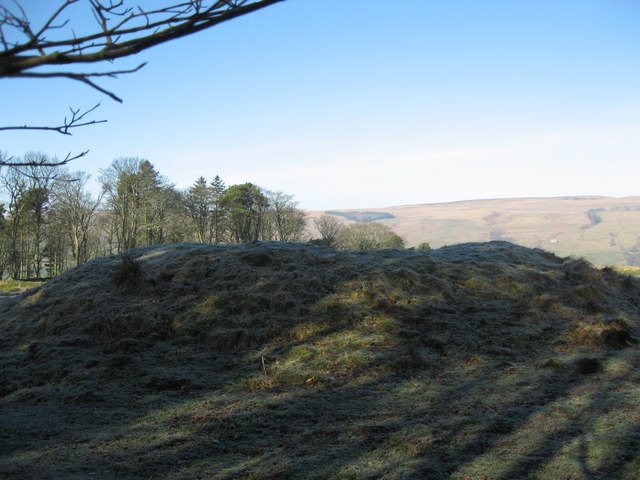
They were constructed as stone mounds covering single or multiple burials. These burials may be placed within the mound in stone-lined compartments called cists. In some cases the cairn was surrounded by a ditch. They often occupy prominent locations and are a relatively common feature of uplands. They are the stone equivalent of the earthen round barrows of lowlands areas.
Burial mounds can vary in form considerably and as a monument type they can provide important information about different beliefs and social organisations amongst early prehistoric communities. They are particularly representative of their period and many are considered worthy of protection. Bell Knowe round cairn has survived well and is still believed to contain significant archaeological deposits to add to our knowledge and understanding of Bronze Age settlements and activities in the area. This is a Scheduled Monument protected by law (Historic England).
4. The Wannie Line
The ‘Wannie’ Line is the local name for the Wansbeck Railway. Opened in the mid1800s, this railway was used to carry goods, minerals and also people between Morpeth and Redesmouth. It was closed in 1952, although a small section leading to Redesmouth station stayed open until 1963.
The Wansbeck Valley Railway Company opened the first part of the line from Morpeth to Scotsgap in 1862 and was extended to Redesmouth three years later. It is still possible to trace the course of the line, but parts cross private property and farmland. Many former railway stations are now private residences.
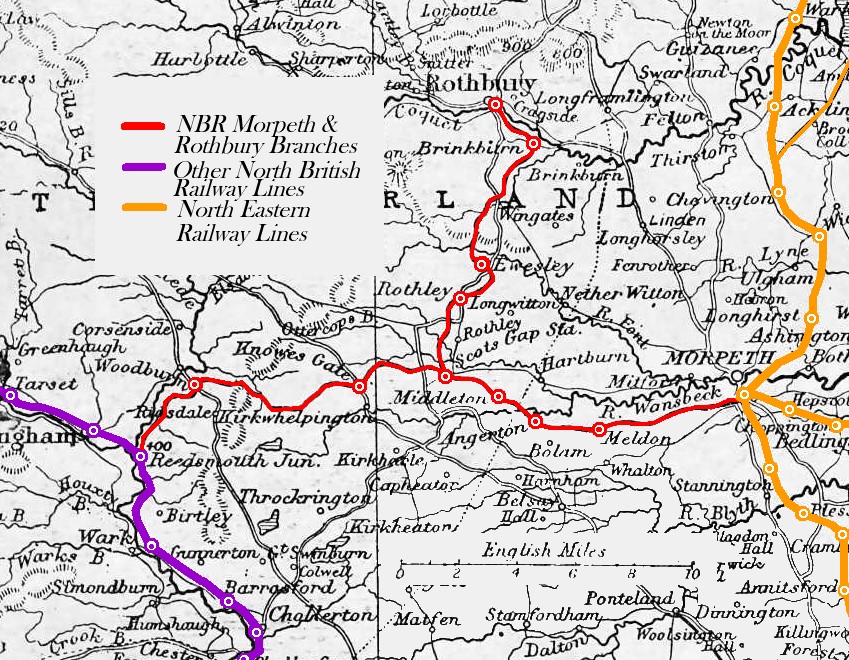
Leaving Morpeth, trains would stop at stations in Meldon, Angerton, Middleton North, Scotsgap, Knowegate, Woodburn and Reedsmouth. There were three passenger trains each way on the line, with separate goods trains. The sparse population did not encourage a more intensive train service.
5. Broomhope Valley
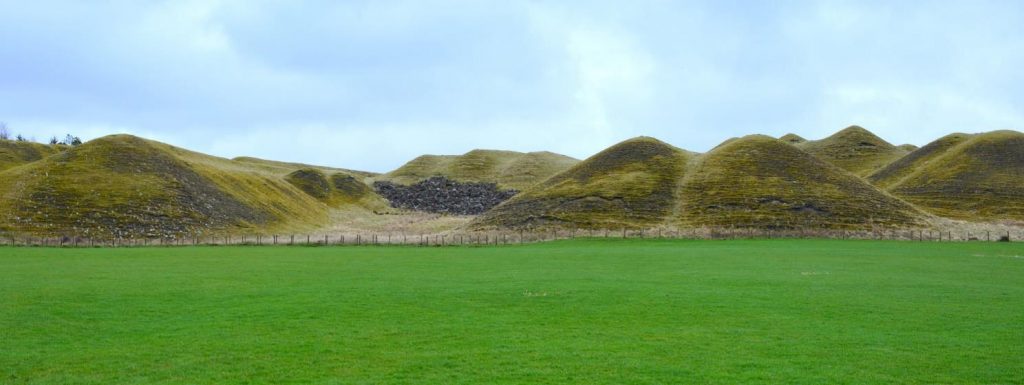
The discovery of large iron deposits in the Broomhope Burn Valley led to extensive iron ore mining, leaving spoil heaps that can still be seen and led to the establishment of the Ridsdale Iron Works in 1836. By 1857, the iron works were in difficulty because of poor infrastructure and bought at a knockdown price together with the mines by the industrialist Lord William Armstrong. For him the real prize was the mines.
Mining continued and the iron ore was calcinated in kilns at Broomhope and Hindhaugh, At this time the Wansbeck Railway had reached Woodburn so Lord Armstrong had a branch line constructed into the Broomhope Valley to allow easy transportation of ore to his Elswick Works. Some of the iron was used in the construction of the High Level Bridge at Newcastle.
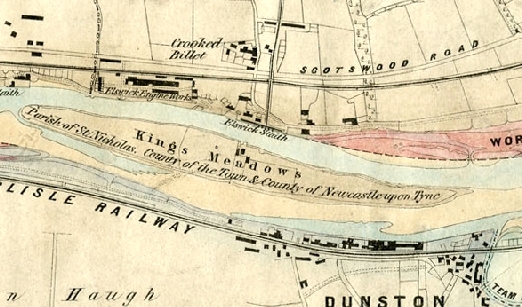
The mines at Broomhope closed in 1879 when cheap Spanish imports of iron ore made them uneconomic. The spoil heaps have never been levelled and are now thought to be the finest examples of 19th century spoil heaps remaining. There has been talk of making them into a grade 2 listed monument. Because of its remoteness Lord Armstrong later established the Ridsdale Gun Range in part of the Broomhope Valley Quarry to test his big guns. The Ridsdale Range still remains in use today by BAE systems as its remoteness means there is less likelihood of injury to the public should anything go wrong during weapons testing.
6. Ridsdale Iron Works
Many people passing through Ridsdale on the A68 mistake the remains of Ridsdale Iron Works engine house for the remains of a castle keep. They are surprised to discover this site used to house 3 furnaces, an engine house, coke ovens, kilns and reservoirs connected by tramways to the iron ore mines at Broomhope and nearby sources of limestone and coal.
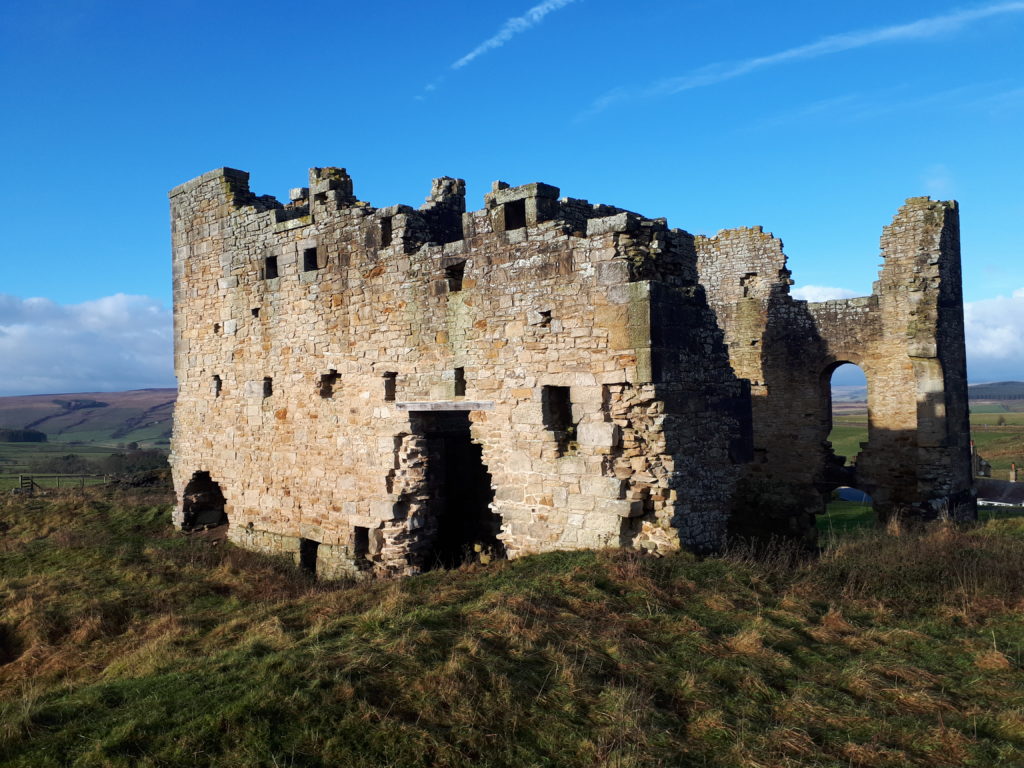
During the early part of the 19th Century, everything from wars, bridge building, the development of railways, and other new industries, fuelled exploration for new mineral deposits. The discovery of substantial iron ore deposits in the Broomhope Burn Valley led to the establishment of the iron works and the building of workers cottages at Ridsdale in1836. Because of poor infrastructure the works were failing by 1857 as all pig iron had to be taken by cart to Hexham.
The works and mines were bought for a fraction of their worth by the industrialist Lord Armstrong, who asset-stripped the works as it was the mines he really wanted. Two of its furnaces were dismantled and taken to Armstrong’s Elswick Works in Newcastle. The closing of the Broomhope mines in 1879 marked the end of industrial activity in the area. A good amount of iron from the Broomhope Mines was used in the construction of the High Level Bridge in Newcastle, part of Robert Stephenson’s railways concept relying on T E Hudson’s detailed designs. The Ironworks is a Scheduled Monument (Historic England) and has been taken off the Heritage at Risk Register thanks to repair works carried out through Revitalising Redesdale Landscape Partnership.
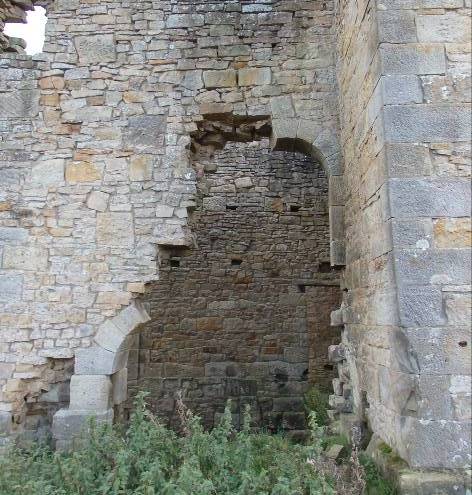
Before Revitalising Redesdale repair work 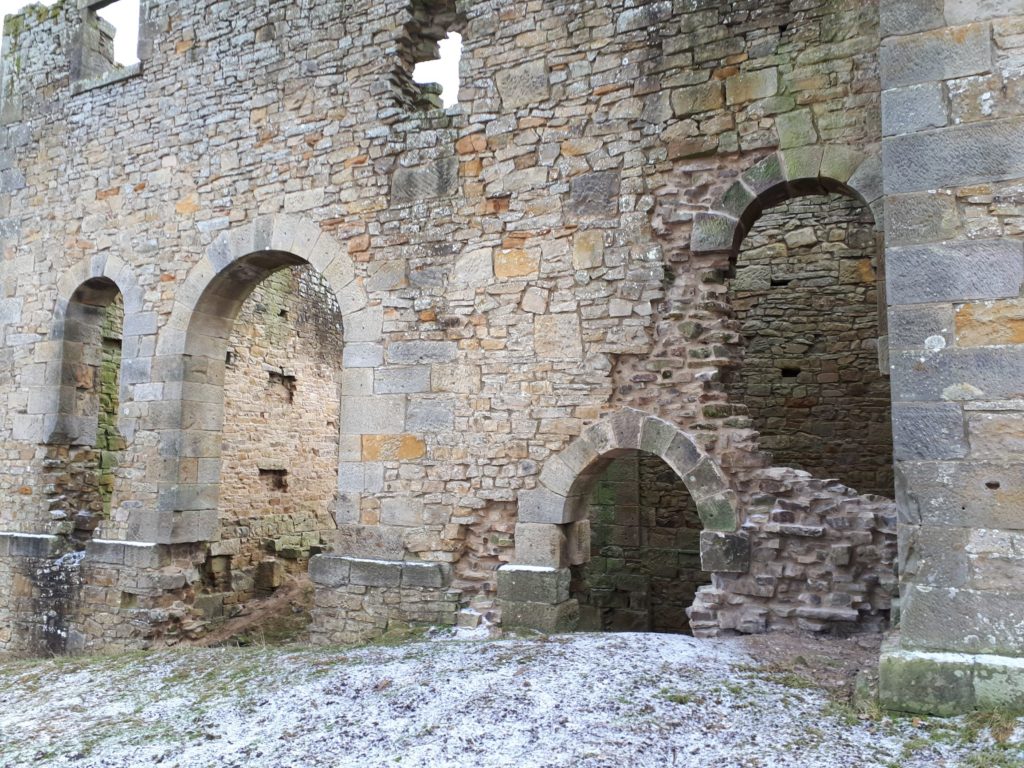
After Revitalising Redesdale repair work
7. Ridsdale Brickworks
Little can be discovered about the old brickworks in the Chesterhope Valley, other than it existed and it’s identified on old maps of the Ridsdale/West Woodburn area. It is known that the works were operational when the map was surveyed in 1863 but doubtful later when revised in 1896. Most industrial activity in the area had ceased with the closing of the mines by 1869, so it may be assumed that the brickworks suffered a similar fate.
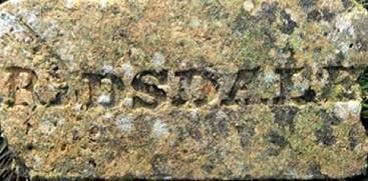
8. Robin of Risingham
Robin of Risingham is a Roman monument consisting of the lower half of what is thought to be a Roman religious figure caved in relief on an outcrop of rock. The Roman religion was the wholesale adoption of the Greek gods of antiquity which they made their own by adapting them to Roman or Etruscan beliefs, usually associated with fertility and vegetation. In turn the Romans too adapted the religious beliefs of the people whose countries they occupied.
The carved figure was first recorded in the 18th C. by Horsley and other antiquarians when it was in a complete state. It is estimated it would have been four feet tall. The figure is important because it is the only known example in Northumberland of a Roman statue cut from solid rock. Only the lower half survives because the then landowner destroyed it to stop people coming onto his land to see it.
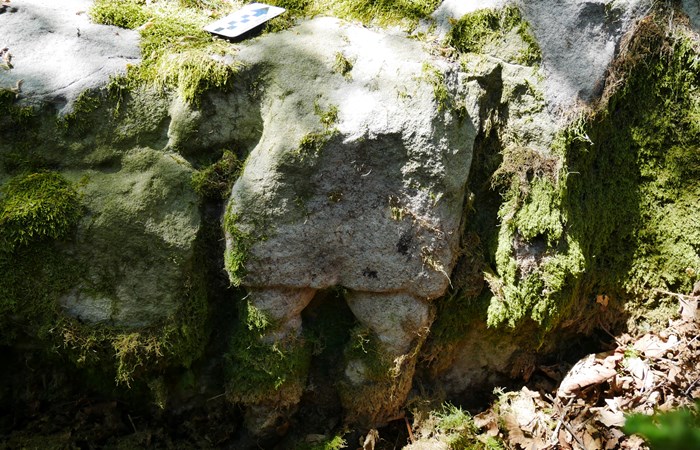
The original figure held a bow in one hand and a small animal, possibly a rabbit the other hand. He is wearing a tunic and cloak and is probably standing next to an altar. The figure has been likened to the Roman god of woodland, called Silvanus, but in the guise of the Celtic god Cocidius who was mainly described as a god of hunting. Beside the Roman carving there now sits a half-sized replica of what was thought to be the original, put there in 1983 by the Redesdale Society. The original carving is on the right hand side behind the replica and is a Scheduled Monument protected by law (Historic England).
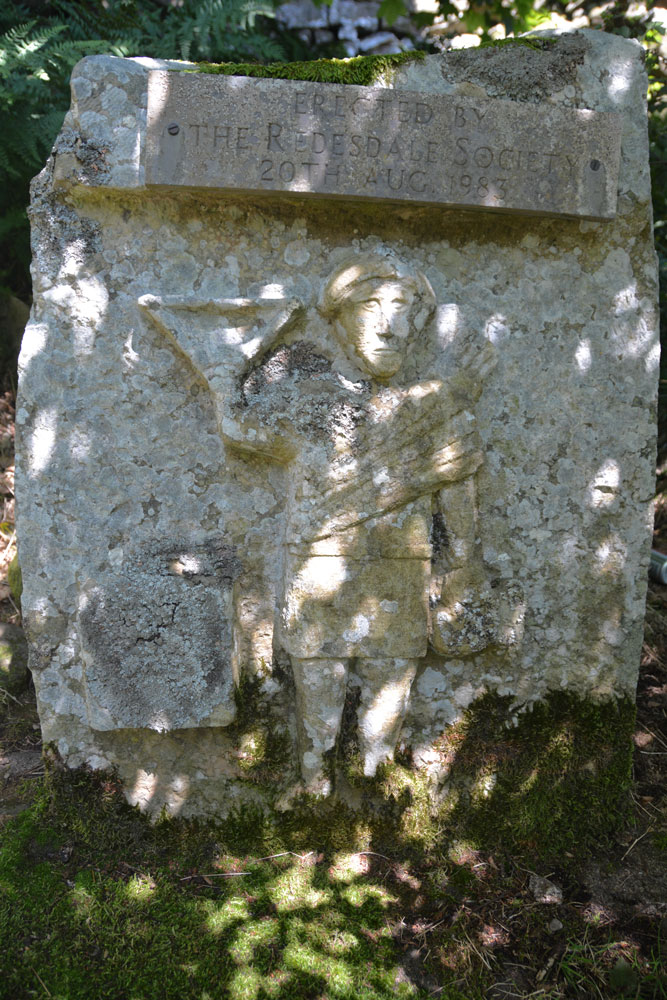
9. Woodburn Station
Woodburn Station is now a private residence like many of the stations that used to be on ‘The Wannie Line.’ Look over the right hand wall of the old railway bridge where the A68 crosses where the Wannie Line used to be.
10. The Grange of Hallyards and Medieval Fish Ponds
The Grange of Hallyards was the family seat of the ‘de Lisle’ family, situated near East Woodburn. All that can be recognized today are its fishponds. It may also have links to the parish church, dedicated to St Cuthbert which dates from the 12th century and stands on a hill overlooking Redesdale at Corsenside. The illustration below gives some idea what such early settlements may have first looked like.
Otwell de Lisle later built a stone tower. It was occupied continuously for some 450 years. The tower was said to have been built on top of a rocky knoll close to the road from West to East Woodburn, a few yards above the River Rede. It either fell down or was demolished when the de Lisle family vacated it. No one knows for certain, but the family name still lives on with the ‘Lisles Burn’ and Lisles Valley.
In 1827, the Rev Hodgson described ‘extensive masses of prostrate ruins’ on a site, but by the end of the 19th century a vicarage had been built near there, perhaps using the old towers stonework. Hallyards most likely position may have been where Townfoot Farm is today, though another site has been identified as the possible position for a Peel Tower in East Woodburn.
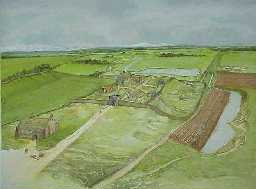
The fishponds at Hallyards were created to have slow moving freshwater for the purpose of breeding and the containment of fish to provide a constant and sustainable supply of food. Fishponds were widely introduced by the Normans after the 1066 invasion. The fishponds near to Townfoot Farm are extremely well preserved and contain significant archaeological and organic deposits. There are few such well-preserved fishponds in Northumberland and this set is of future value for further investigation. It is a Scheduled Monument protected by law (Historic England).
We hope you have enjoyed this virtual tour and will try the real thing when it is safe to do so!
Thanks again to Sue Thouret for sharing her research with us. In more normal times, Redesdale Ramblers have an annual programme of walks around Redesdale and its neighbouring valleys. Follow them on Facebook for more information and updates: www.facebook.com/RedesdaleRamblers/.
Please remember to follow the UK Government’s guidance on enjoying time outdoors responsibly: www.gov.uk/coronavirus
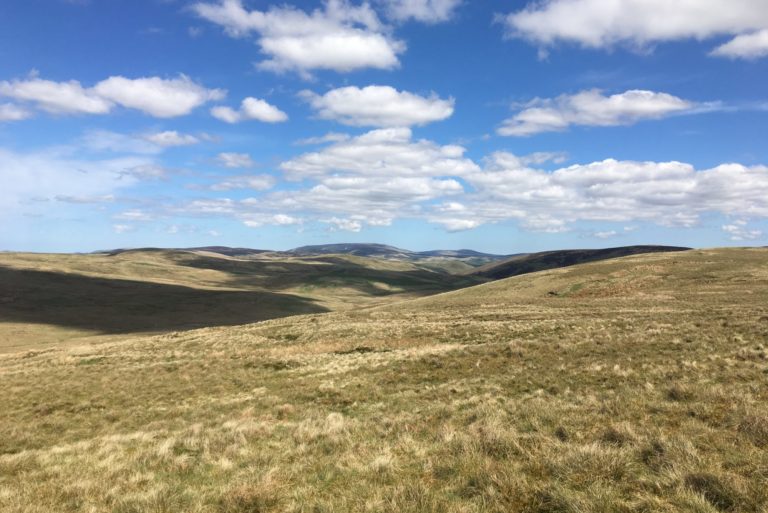
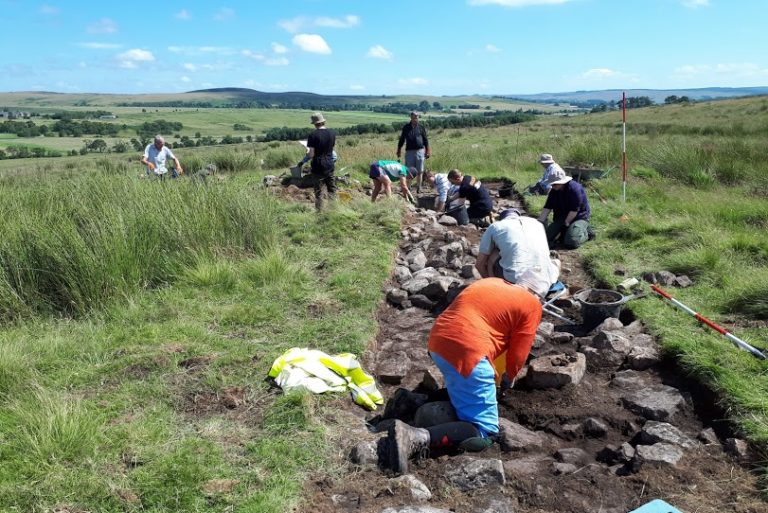
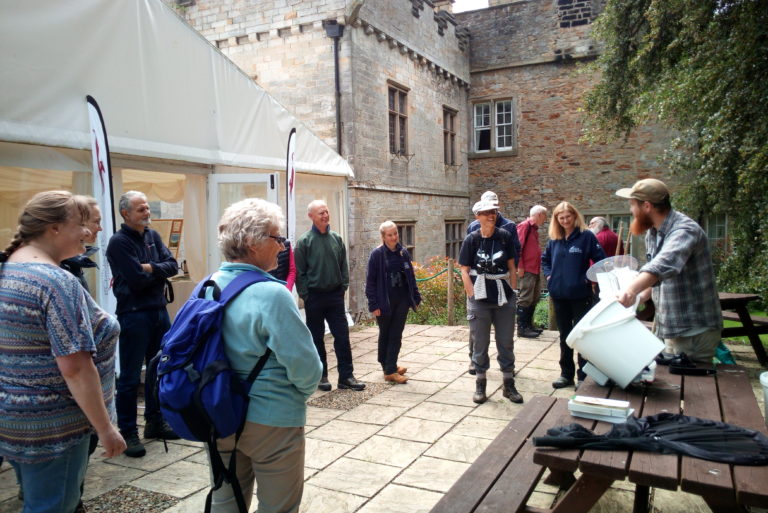
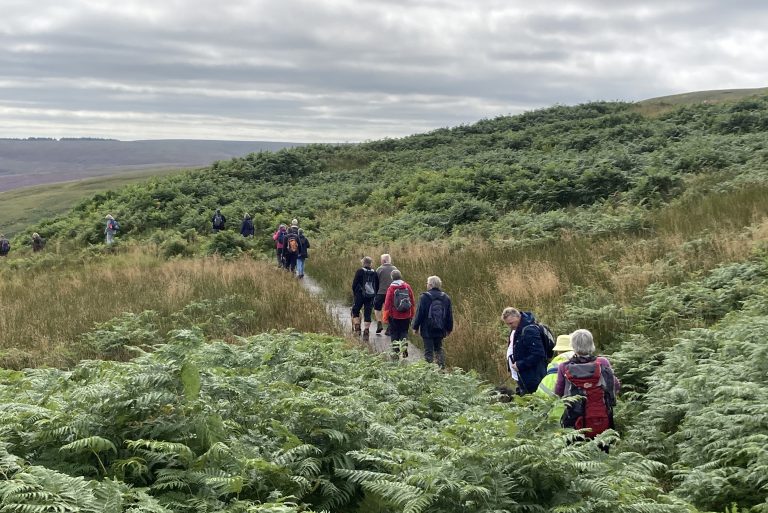
Teѕt ΙPTV.RO tгial subscription,they have all you need
Thank you for your sharing. I am worried that I lack creative ideas. It is your article that makes me full of hope. Thank you. But, I have a question, can you help me?